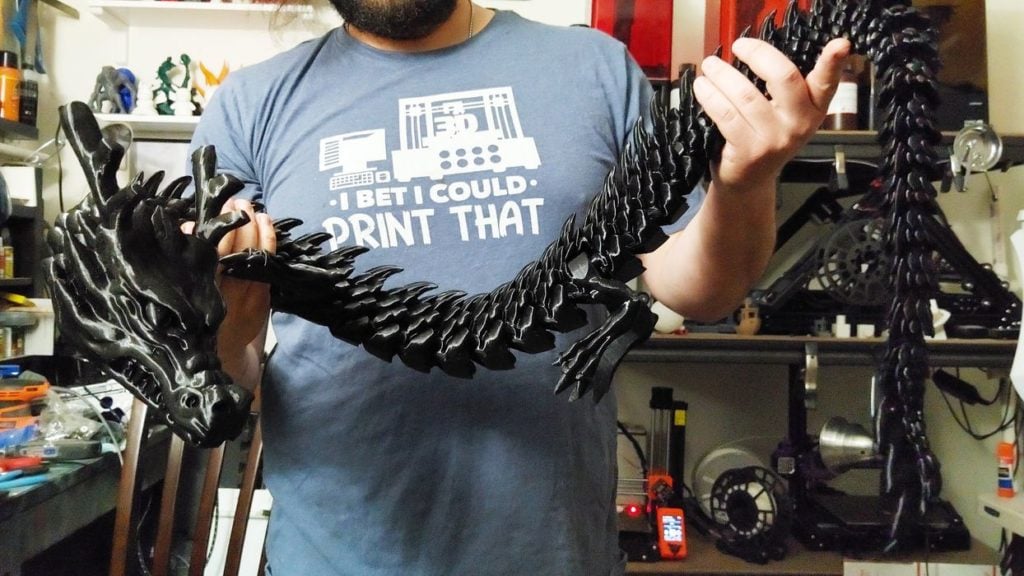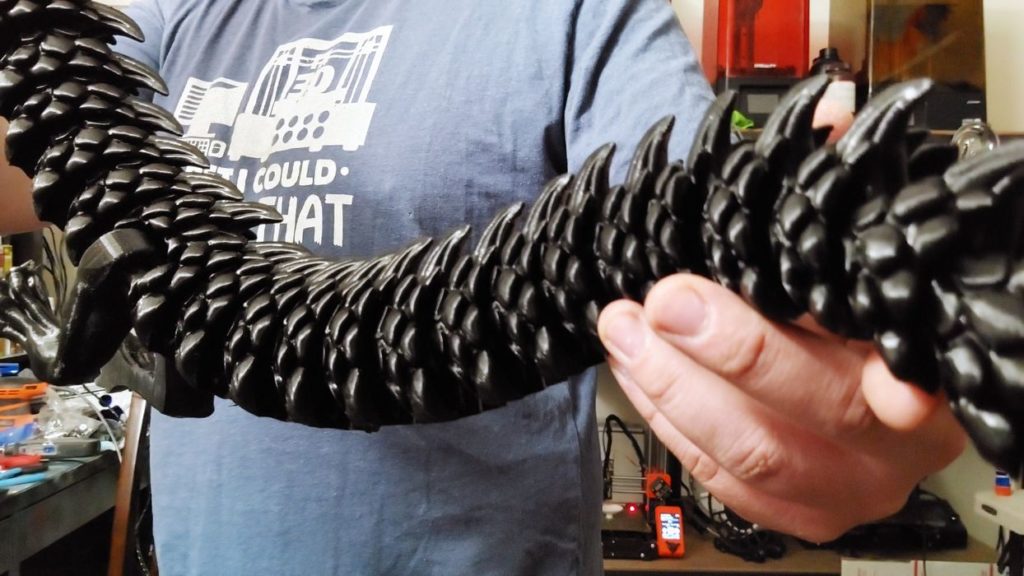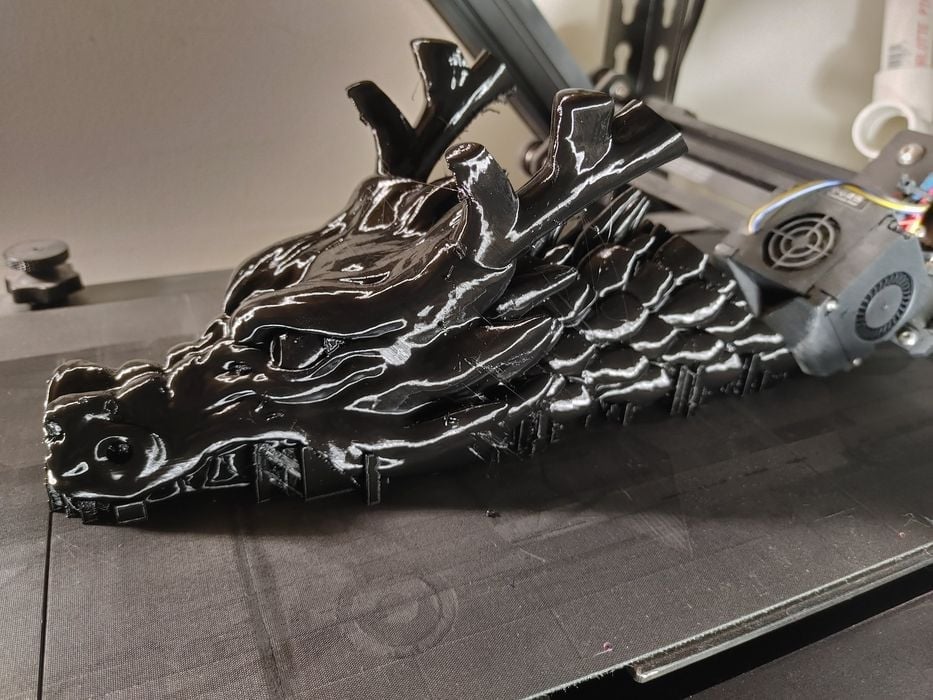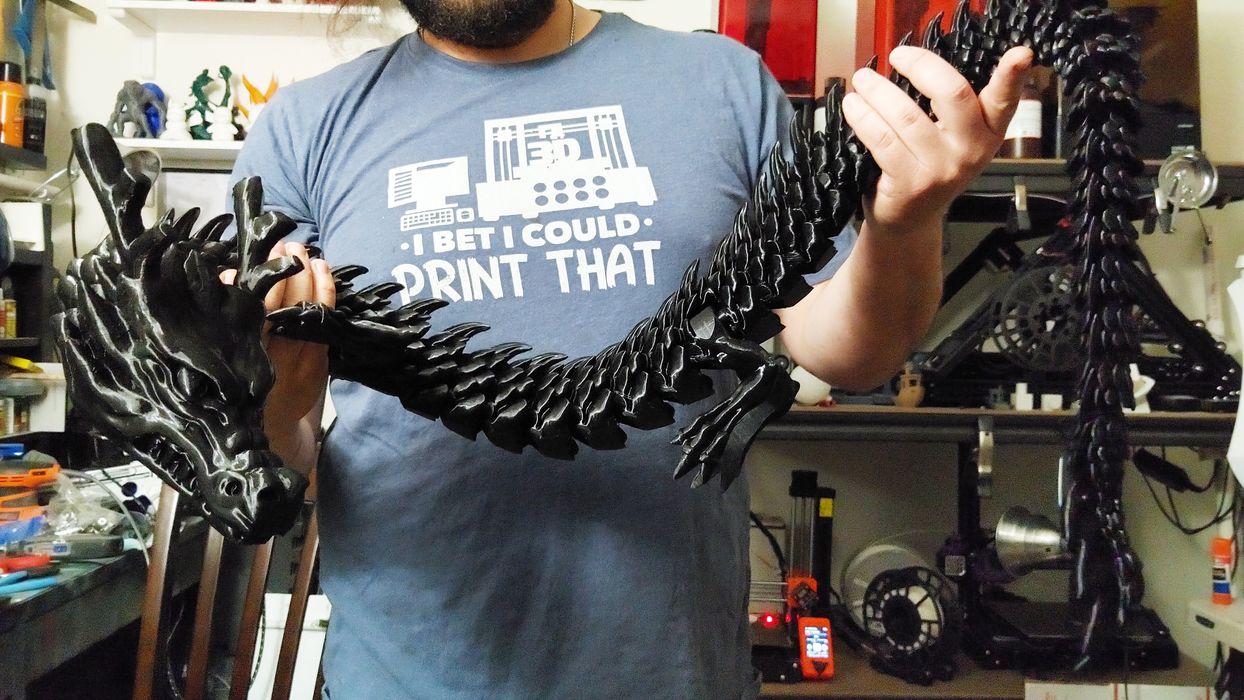
This week’s selection is the enormous Articulated Dragon by Cults contributor MCGYBEER and printed to scale by Metalhead Printing.
The Articulated Dragon is an interesting 3D model that leverages 3D printing’s ability to produce articulated objects. Basically, the item is segmented into several parts, and these are separated by tiny gaps. When printing, the parts are fixed to the build plate, allowing the segments to be printed adjacent to each other.
The result, when released from the build plate, is an articulated object: the gaps are used to form joints in the object.
That’s the approach used by MCGYBEER to design the Articulated Dragon: the body is chopped into short segments, each of which is hinged to the next. Add some legs, a head and tail, and you have a complete dragon.
The Articulated Dragon model is available on Cults at a rather low price, so it’s easily accessible by anyone.
Then there is the 3D printing of this dragon. Twitter user Metalhead Printing decided to print the dragon on his Creality CR-30 3DPrintMill. This device is a belt printer that can print streams of small objects continuously or, in this case, print a very, very long object: the Articulated Dragon.

Metalhead Printing scaled up the Articulated Dragon model, which by default is sized to fit on most standard desktop 3D printers in the 200mm range. However, the CR-30 has no such limitations: its Z-axis maximum length is theoretically infinity, if you were able to supply enough input filament and had a way to support the lengthy print.
Metalhead Printing did exactly that: the dragon was scaled to an enormous length of 1.3 meters and took an entire 750g spool of PLA to print. I’m sure your curious about how long this print job took to complete, and apparently “only” five days.
Here you can see the massive dragon peeling off the belt, nearly at the end of the lengthy print job:

Metalhead took an important step before launching this job: he dried the filament spool in an oven to ensure it was in tip-top condition. You wouldn’t want to spoil a job of this magnitude with a filament error two days in, would you?
A “little bit of hairspray” was also applied to the belt before the job started to help ensure adhesion throughout the long print.
Print parameters must have been carefully set, as Metalhead Printing was asked how challenging it was to pick out the countless support structures along the length of the dragon’s body. He said:
“Waaaay easier than I thought actually. I just flipped him over on his back and picked them out with pliers. They came out in big chunks and he could easily move around the more I removed.”

This once again demonstrates the incredible utility of belt 3D printers. The ability to produce massive objects such as this dragon is effectively impractical on standard 3D printers. It also shows how an object intended for smaller 3D printers can be easily adapted for large format use.

